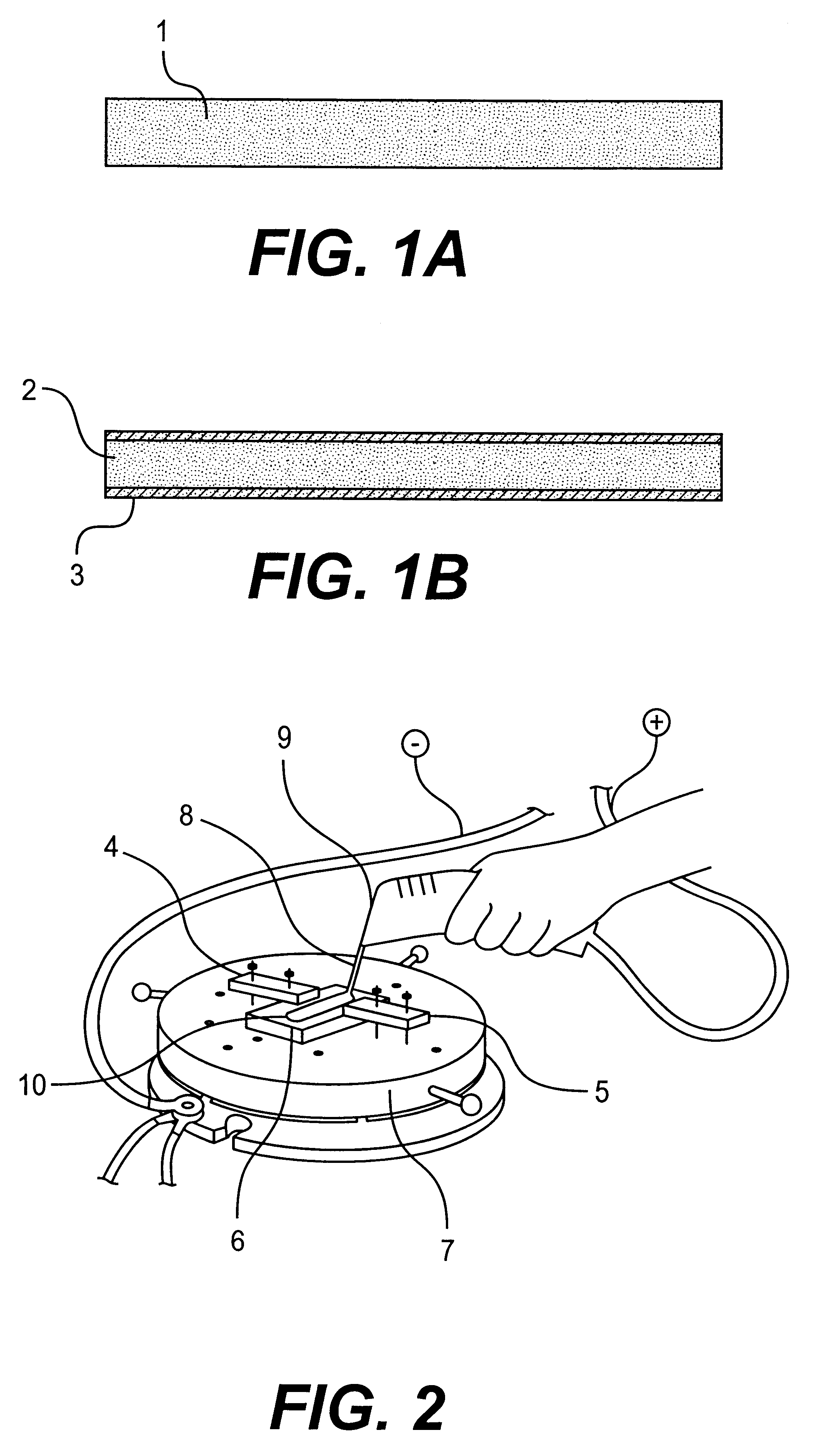Electrode rod for spark deposition, process for the production thereof, and process for covering with superabrasive-containing layer
a technology of electrode rods and electrodes, which is applied in the direction of metal-working apparatus, metallic material coating process, plasma technique, etc., can solve the problems of limited number of materials available for this purpose and the difficulty of electrode rod preparation
- Summary
- Abstract
- Description
- Claims
- Application Information
AI Technical Summary
Benefits of technology
Problems solved by technology
Method used
Image
Examples
example 1
A coating, of NiAl and TiN was formed on the work surface of a 30 by 30 by 5 mm block of GS6U nickel alloy, and both wear resistance per unit surface area and oxidation resistance were evaluated against the observed relative density (to the calculated value being 100) of the coating. Five electrodes were prepared using 100 volume parts of equimolar mixed powder of nickel and aluminum, which was admixed with 30 parts of TiN, and formed into compacts in a metallic die. The relative density of the rods was varied by means of the temperature they were fired. The discharge energy input and the deposition rate were fixed at 0.3 J and 1 cm.sup.2 per minute, respectively. The were lightly vibrated at 100 Hz relative to the work surface, while an estimated 10.mu.m gap, approximately, was maintained during the discharge between the work surface and electrode tip.
The wear resistance was examined in the grinding of corresponding sample blocks with a specific diamond wheel and evaluated as the l...
example 2
The relationship was determined between the discharged energy and resulting deposit thickness and continuity in several cycles of ESA-SHS process. The electrode rod was made up of equimolar mixed powder of Fe and Al, admixed with 35 vol. % TiB.sub.2 powder, formed at an 80% relative density. Coatings were deposited in argon at a rate of 1 cm.sup.2 per minute.
example 3
Electrode rods were prepared from an equimolar mixed powder of Ni and Al, admixed with 30 to 40 .mu.m diamond. Coatings were deposited in argon at a rate of 1 cm.sup.2 per minute, and evaluated in wear resistance of the deposited coatings. The test was conducted with GS6U nickel alloy works, as example 1, at a fixed energy input of 0.1 J. The wear resistance was evaluated by the same procedures as in example 1.
PUM
| Property | Measurement | Unit |
|---|---|---|
| melting point | aaaaa | aaaaa |
| size | aaaaa | aaaaa |
| size | aaaaa | aaaaa |
Abstract
Description
Claims
Application Information
 Login to View More
Login to View More - R&D
- Intellectual Property
- Life Sciences
- Materials
- Tech Scout
- Unparalleled Data Quality
- Higher Quality Content
- 60% Fewer Hallucinations
Browse by: Latest US Patents, China's latest patents, Technical Efficacy Thesaurus, Application Domain, Technology Topic, Popular Technical Reports.
© 2025 PatSnap. All rights reserved.Legal|Privacy policy|Modern Slavery Act Transparency Statement|Sitemap|About US| Contact US: help@patsnap.com

